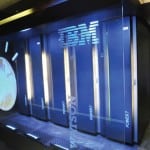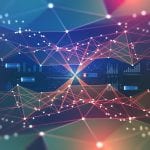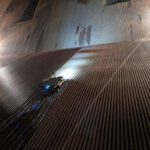Artificial intelligence (AI) is a term power professionals are seeing increasingly to describe sophisticated digital technologies. Could it be the breakthrough that is so highly hyped?
There is no argument about how profoundly electric power has changed our world. The advent of steam power to mechanize production propelled our world into the Industrial Age, triggering the first of several industrial revolutions. In the Second Industrial Revolution, the use of power enabled the era of mass production, spurring groundbreaking advancements in transport, telecommunications, and manufacturing. The Third Industrial Revolution ushered in the digital age, marked most distinctively perhaps by the proliferation of internet (and later, the internet of things), and the widespread use of information technology to automate production. And, now, according to the World Economic Forum (WEF), we are at the cusp of another profound change: a fourth revolution, a transformation that is distinct in its velocity, scope, and systems impact, characterized by scientific and technological breakthroughs that are disrupting industries and blurring geographical boundaries.
According to the Geneva-based public-private international cooperation that serves as a common platform for adaptability, driving the Fourth Industrial Revolution—its “software engine”—is artificial intelligence (AI). The concept has no uniformly agreed-upon definition, but its applicability could have a widespread potential across all industries, generally to enable people to rethink how to integrate information, analyze data, and use insights to improve decision making. Like other industries, the power sector has been inundated by AI-enabled digital solutions of late. Though many seasoned experts caution much of it is hype, pointing to existing limitations, others laud AI’s potential in a sector already being dramatically reshaped by a number of trends, among them, digitalization, decarbonization, and decentralization.
A Sticky Definition
As Harshal Upadhye, program manager for the Artificial Intelligence initiative at the Electric Power Research Institute (EPRI), explained to POWER, key reasons that there’s no “single-tested universally accepted definition” of AI is because it’s broad and complex, and because its applications are fairly new—and constantly evolving. The concept was first introduced by John McCarthy, the founding father of AI, in a 1956 conference paper as “the science and engineering of making intelligent machines, especially intelligent computer programs.” But today, AI is based on a variety of disciplines, including mathematics, statistics, cognitive science, philosophy, and linguistics. EPRI loosely defines AI as “how machines can imitate human intelligence”—being human-like rather than becoming human—such as learning from experience, said Upadhye. Because it enables a vast set of capabilities, AI can be viewed as a “tool,” he explained.
The U.S. Department of Energy (DOE), which last September established a new Artificial Intelligence and Technology Office (AITO) to serve as a hub to coordinate the agency’s AI development, delivery, and adoption, also emphasizes AI’s capability to solve problems. Its AI definition: “the capability of machines to rapidly learn from large data sets, solve problems, and continuously adapt to new data without human intervention.” The DOE’s definition was echoed by Bryan Friehauf, executive vice president and general manager of Enterprise Software at Zurich-based technology conglomerate ABB, who stressed AI’s capability is enhanced “by identifying patterns within data to make decisions.” Notably, the term AI is still evolving, along with the growing opportunities it affords. “There are three key reasons why: an increase in computing power, access to data, and improved algorithms,” he said.
Marco Sanchez, vice president of Service Sales at Mitsubishi Hitachi Power Systems’s (MHPS’s) newly launched Intelligent Solutions, a division that is largely invested in MHPS’s TOMONI solutions, further illustrated how the definition can depend of its end-uses: “In our view, AI encapsulates automating processes and actions that are performed by humans today, which can have a positive impact on performance, productivity, and efficiency,” he explained. However, he agreed AI uses heavily depend on data. “AI leverages structured data, for instance, machine sensor data, and unstructured data, such as [original equipment manufacturer] manuals, maintenance records, weather data, and market/business data, to perform advanced decision making,” he explained.
Understanding AI’s Different Facets
To understand the crucial role data plays in AI’s vast complex, it is useful to examine the technology’s varied encapsulating and overlapping approaches (Figure 1).
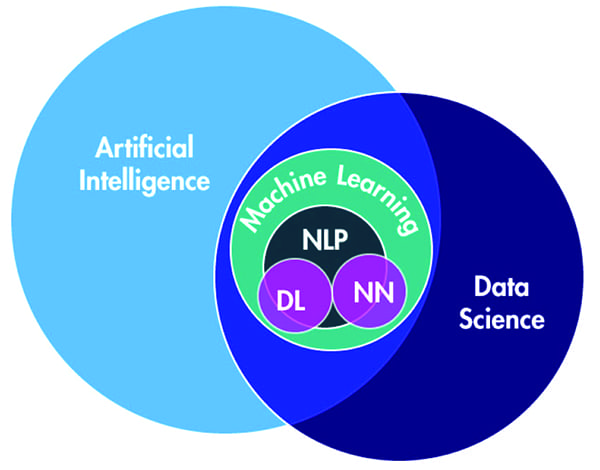 |
|
1. Artificial intelligence encapsulates several concepts including natural language processing (NLP), deep learning (DL), and neural networks (NN). Courtesy: EPRI |
Machine Learning. “Sometimes used interchangeably with AI, machine learning (ML) is the study of data-driven computer algorithms that improve automatically through experience,” EPRI explains. ML, currently the most widely used subset of AI, encapsulates natural language processing (NLP), deep learning, and neural networks. ML, however, is better understood by the two tasks that define it: supervised and unsupervised learning.
In supervised learning, “the learning is done using a ground truth, where there is prior knowledge of what the output values for a sample data set should be,” it says. Essentially, its goal is to “learn a function that best approximates the relationship between a data sample and the desired outputs,” and it then uses that function to predict the output for a given input data set. “Supervised learning is mainly used for classification problems; common algorithms include regression, support vector machines, artificial neural networks (ANNs), and random forests.” This makes it well-suited for power sector applications such as asset management, which could use a set of images to recognize damage, for example.
Unsupervised learning, meanwhile, does not required labeled data, and its key goal is to learn an inherent structure within a set of data points. “Unsupervised learning is mainly used for clustering problems,” EPRI explains. So, for example, unsupervised learning could accelerate the analysis of images of damaged assets by clustering similar images, allowing a human to label just one image per category.
Natural Language Processing (NLP). NLP helps computers capture, interpret, and make sense of human languages using supervised or unsupervised learning methods. Drawing from the fields of computer science and linguistics, it is used, for example, for text analysis and creating chatbots. “One industry-specific application of NLP is the processing of documents such as injury reports to analyze and make recommendations for safe operations,” EPRI says.
Artificial Neural Networks (ANNs). Inspired by the human brain, ANNs are essentially input and output layers as well as a hidden layer that transforms the input so that it is usable by the output layer. An ANN with multiple hidden layers is known as a “deep neural network.” Deep neural networks learn from a large amount of data, using algorithms to perform a task repeatedly, each time adjusting it to improve outcomes—almost in the way a human learns from experience. The process is more commonly known as “deep learning,” another buzzword gaining traction in the industry. “Image recognition for identifying damaged assets and predictive maintenance applications for assets are examples of ANNs and deep learning algorithms applied in the power industry,” EPRI says.
AutoML. EPRI describes this as the “end-to-end process of automated application of machine learning to real-world problems, such as data preparation, feature engineering, and model selection.” It notes this is gaining attention “due to the lack of expertise in applying machine learning techniques.”
A Vast Potential
Every expert POWER spoke to lauded AI’s future potential. Most agreed that its ability to leverage operational value as the sector grapples with multiple disruptions—including decarbonization, decentralization, and digitization—is perhaps its biggest promise.
According to Upadhye, based on EPRI’s work as well as on interest industry has expressed, AI tools available today offer the best potential to resolve issues using imaging, for example, as an application to relieve the time-consuming and tedious inspections process. “Pretty much every asset in the utility space gets inspected one way or the other, and the amount of actions that can be automated using AI are immense,” he said. It also appears that AI’s potential will likely extend to applications that involve assets with sensors that generate time series–type data. “Analysis of that sort of data to predict future behavior or maintenance needs, or potential impending danger, or something like that—understanding that behavior, and understanding those patterns is critical. It could save the industry a lot of downtime,” he said.
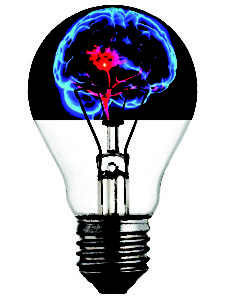 |
|
2. Inspired by the human brain, deep neural networks learn from a large amount of data, using algorithms to perform a task repeatedly, each time adjusting it to improve outcomes—almost in the way a human learns from experience. Source: Stock/Pixabay |
As GE Digital Vice President of Data and Analytics Matt Schnugg, told POWER, “While there will be many edge cases that can also accommodate AI and/or ML, the next step function in value that the practice will return will be in taking the focus from the performance of one asset to the performance of the fleet, and eventually to the performance of the entire electricity network—from generation to eventual consumption by the consumer.” AI’s potential to boost “predictive and prescriptive capabilities” is especially crucial today “because the transaction of that generation has become significantly more complicated with the ubiquity of distributed generation in the form of solar or wind,” he said.
Echoing these points, ABB’s Friehauf added that AI could also take simulations to the “next level,” for example, to help utilities locate unstable areas of the grid and increase field worker safety. “From daily operations, grid safety, reliability, and more, there is a tremendous opportunity for AI,” he said. MHPS’s Sanchez also pointed to AI’s potential “significant role” in the future integration of power sector businesses, by, for example, leveraging low-carbon resources, improving forecasting, and boosting autonomous operation. These could yield “more evident, accessible, and economically viable” safety and environmental benefits, he said. Finally, AI offers the value of innovation, Sanchez noted, for example, helping to boost simulator capability “to enhance their capacity and ability to eventually synchronize online.”
AI’s vast potential has spurred notable initiatives by a long list of digital solution providers, academic and government-backed researchers, and utilities. As examples, GE has implemented neural networks and edge controls in its Advanced Combustion Control systems to optimize fuel splits for gas and aeroderivative turbines, an effort it says has reduced regulated nitrogen oxide and carbon monoxide emissions, and improved overall quality of performance. At a fleet level, it offers a “Production Planning Advisor” to help traders and dispatch planners understand a combined cycle plant’s day-ahead and real-time capacity, which helps them better prepare for commitments, and plan fuel nomination and dispatch. At a network level, it has implemented ML into an analytic called “Effective Inertia” to help grid operators better relate inertia to known and predictable values, such as conventional rotating inertia and load.
Yokohama, Japan–headquartered MHPS is continuing to validate future TOMONI AI-enabled components and solutions at its “fully autonomous” 600-MW T-Point 2 combined cycle Takasago Machinery Works facility. Sanchez told POWER 2020 is shaping up to be an “exiting year” for that project. ABB, meanwhile, is leveraging AI to unlock insights offered by its Digital Enterprise software portfolio, which builds on a common data fabric. ABB also uses AI in its Asset Performance Management solution. Among other examples, Siemens is collaborating with U.S. software firm Bentley Systems to provide a joint service that is hosted on Siemens’ cloud-based system MindSphere, and it uses AI to help operators better understand power plant performance.
The Pitfalls of Early Adoption
Still, according to EPRI’s Upadhye, the power sector’s adoption of AI has a way to go before the sector can reap any potential widespread benefit from AI. “We are still in the early stages of the industry, and the biggest challenge of the day is data. Everything needs background data, and getting the data, collaborating with others to get the right data set,” he said. “As data becomes available and models get trained, that’s when we’ll see even more adoption in the industry. Right now, it’s bits and pieces, and experiments and pilots, where [power sector stakeholders are taking stock] of their abilities and demonstrating their capabilities, but I wouldn’t call it adoption at this point.”
A lot of the excitement and misunderstanding about what AI can do for the power sector stems from promising first applications, as GE Digital’s Schnugg suggested. “Pilots are generally greenlit with enthusiasm and appropriate resourcing,” he said. However, this excitement has led to two “suboptimal outcomes.” One is that “there was investment for investment’s sake, without truly articulating a problem that required an actionable insight. When you’re solving the wrong problem, AI commonly will overengineer a solution that could otherwise be solved with more heuristic means. At that point many of the old guard will tell their AI-enamored counterparts that they could have solved that issue in a quarter of the time at an eighth of the cost.” In some cases, he noted, an “investment returned a successful pilot, but in an unrealistically controlled environment. Attempts to recreate success in a more broad environment run into extensibility issues primarily around data and deployment limitations.”
A key solution to these problems, he suggested, is to “truly understand” problems that need resolving before deciding on which method to solve them. Then, “Once the problems are sufficiently articulated and AI/ML does turn out to be an optimal solution, then they must be scaled in a digital environment with appropriately cleansed, modeled, and orchestrated data.” That’s why Schnugg suggested that the value of AI/ML will hit its first inflection point when more common fleet and network level use cases are adopted into daily operations—not when the most sophisticated algorithms are developed.
ABB’s Friehauf, meanwhile, also pointed to relatively sparse expertise in the power sector of successfully managing the expanse of operational data AI needs to thrive. He suggested that along with finding partners with both the necessary domain and software expertise, utilities may need to “undergo workforce transformation and develop a culture of collaboration between workers and technology. They need to integrate AI into their strategic planning and long-term business plans and understand the opportunities that come with it in order to successfully reshape their company culture, minimize risk, and gain the most value from the technology solutions.”
Existing power sector standards for safety, quality, and testing could also prove challenging for existing systems integration, noted MHPS’s Sanchez. MHPS, he said, is tackling that through its T-Point 2 facility. “Having our own state-of-the-art power plant allows us to validate our technologies, ensuring maximum reliability and quality for our users.”
Leveraging Industry Resources
Asked what interested entities without that type of bandwidth could do to prepare for AI’s potential, Upadhye said approaching EPRI would be a good start. The nonprofit research organization has cultivated a “four-pronged approach,” to provide thought-leadership on AI, he said.
First, the entity’s current focus is on curating actionable data sets using industry information. Second, EPRI offers an assortment of industry-focused experts that could advise power sector entities on the functions and limitations of AI tools. Third, EPRI is actively working to help pinpoint power sector issues that the larger AI community can resolve with existing tools. “What we want to do is reach out to those AI experts and say, … ‘how can you transfer some of your knowledge into our industry to help us solve our issues? There’s billions of dollars spent on these issues, and your solutions could help us.’ We want to be that bridge to the community as well,” said Upadhye. Finally, EPRI wants vendors to test their technologies on its curated data sets to give the industry a more solid idea of how that tool (and data sets) work together to solve a specific industry problem.
“The unbiased and technically sound evaluation of AI solutions is critical to the industry,” he said. ■
—Sonal Patel is a POWER senior associate editor.








